
Sold Price ANTIQUE JAPANESE CARVED BONE NETSUKE WITH THREE FACES Invalid date EST
The Japanese have a proverb, it says: "You have three faces. The first face, you show to the world. The second, you show to your close friends and family. The third face, you show no one —.
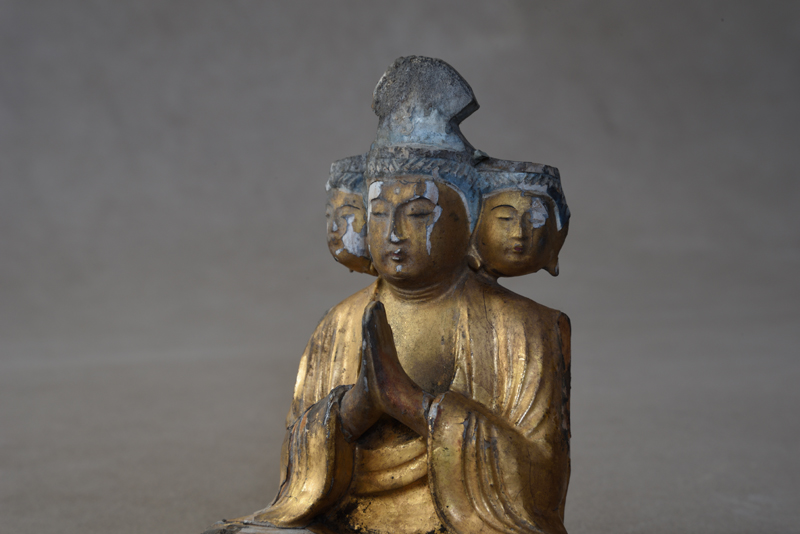
THREEFACE BUDDHA t a t a m i Contemporary Antiques from Japan
The Japanese say you have three faces. The first face, you show to the world. The second face, you show to your close friends, and your family. The third face, you never show anyone. It is the truest reflection of who you are. I would like to know what is the actual word in Japanese? is it true? phrase-requests english-to-japanese Share

“The Japanese say you have three faces. The first face, you show to the world. The second face
The Japanese say: we have three faces, the first one; which we show to the world, the second one; we only show this one to our close friends and family members, and the last one; this is the hidden one, we do not show it to anyone, it's the truest reflection of us. As I'm really curious about such matters so I made a little research.

The Japanese Say You Have Three Faces YouTube
Introduction Japanese culture is unique and fascinating, and one of the most interesting aspects is their belief in having three faces. This concept can be confusing for outsiders, but it holds a deep meaning in Japanese society. In this article, we will explore the reasons behind this belief and its significance in Japanese culture.

Japanese 3 Faces Tattoo
Senior Japanese Women Looking at Pictures on Phone Three senior Japanese women and friends are looking at the pictures taken with their mobile phones. They are smiling and having a great time exploring the new frontier of social media. Image taken in Kyoto, Japan. japan 3 faces stock pictures, royalty-free photos & images

Three Faces Antique Japanese Folk Play Mask Ojime at 1stDibs japanese three faces
A beautiful face might seem eternal but standards of beauty change over time. Japan in recent years has idealized the "small face" (kogao) for both women and men. Professor Harashima Hiroshi.
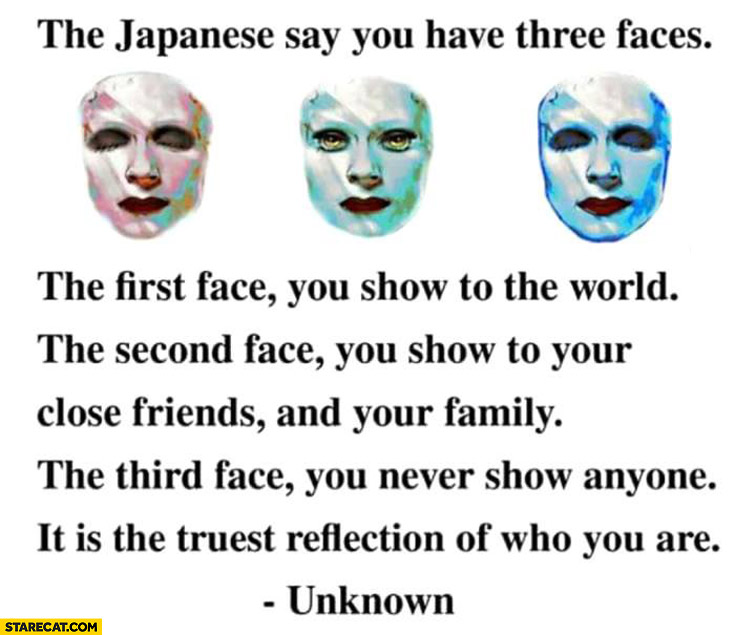
The japanese say you have three faces
In Japan, honne refers to a person's true feelings and desires (本音, hon'ne, "true sound"), and tatemae refers contrastingly to the behavior and opinions one displays in public (建前, tatemae, "built in front", "façade").This distinction began to be made in the post-war era.: 35 A person's honne may be contrary to what is expected by society or what is required according to one's.
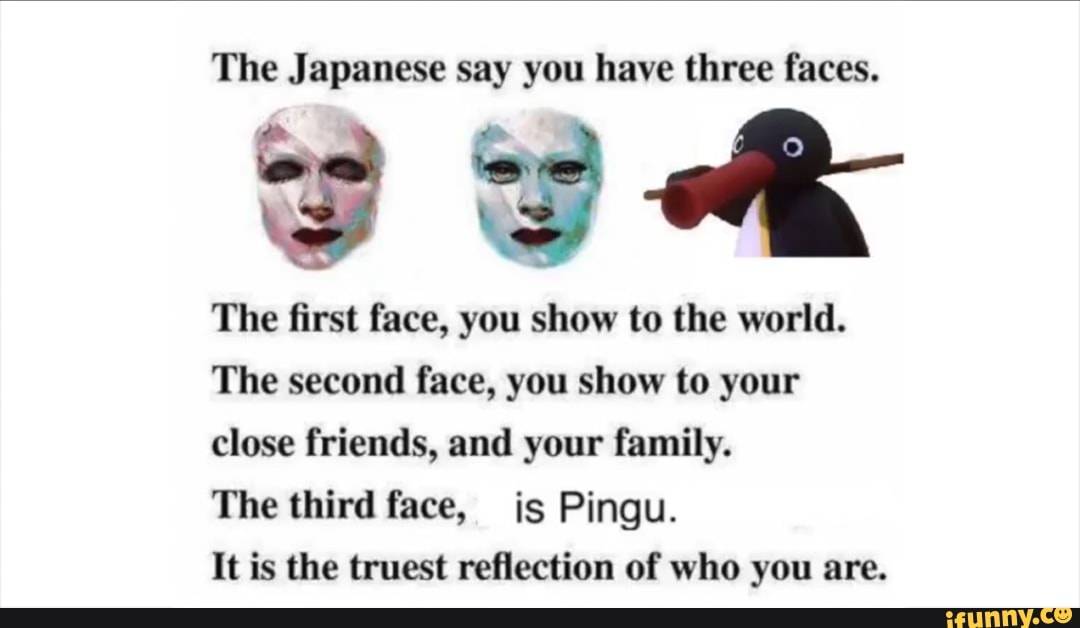
The Japanese say you have three faces. a§* The first face, you show to the world. The second face
The Japanese say you have three faces. The first face, you show to the world. The second face, you show to your close friends, and your family. The third face, you never show anyone. It is the truest reflection of who you are. Setting aside the fact that it's probably about as Japanese as my big toe, it provides some interesting questions. "

Three Faces Antique Japanese Folk Play Mask Ojime at 1stDibs japanese three faces
The 3 face theory, is a Japanese Proverb theory. They say we, humans, have 3 faces each presented to a different category of people. The first face is the face we show to the world, diplomatic and perfect. The second face is the one we show to our family and friends, semi-real but not the truest.

The Japanese say you have three faces... powerofpositivity positivewords positivethinking
1. The three faces The three faces refer to the distinct personas you present in public, professional, and private settings. Maintaining boundaries between these faces is important in Japanese culture. 2. Your public face In public, you conduct yourself politely and avoid causing offense. Personal opinions are kept private to maintain harmony. 3.

Japanese Three Faces convoset
Konnichiwa everyone! Today, I want to dive into a fascinating aspect of Japanese culture that resonated with me deeply - Say you have 3 faces! In Japan, there's a saying that suggests we all have three faces. The First Face is the one we present to the world—the face we wear at work, in public, and to acquaintances. It's the polished and composed version of ourselves, representing our social.

The Japanese say you have 3 faces The first face; you show to the world. The second face; you
The Japanese say you have three faces. The first face, you show to the world. The second face, you show to your close friends, and your family. The third face, you never show anyone. It is the truest reflection of who you are. Reddit, what is your true face? Like the title says. What's the mask you hide from everyone?

Three Faces Antique Japanese Folk Play Mask Ojime at 1stDibs japanese three faces
The Japanese have a philosophy of three faces. It's the idea that we are not the same person at all time. We show different parts of ourselves to different people. I can recognize this pattern in myself. Furthermore, when I look closely at the people around me, I can see it in them too.
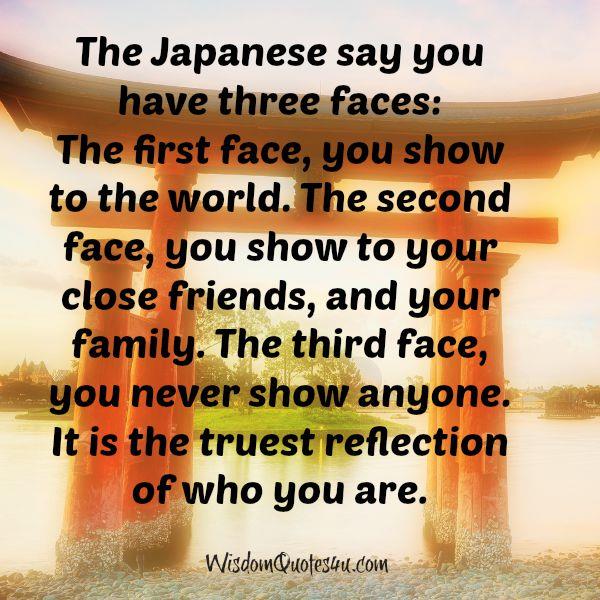
The Japanese say you have three faces Wisdom Quotes
In Japanese society the concept of "face" or kao is paramount. The word kao literally means the front of one's head and also incorporates the appearance and condition of one's physical face. Kao is the overarching concept of. "face" in Japan, with two distinct meanings: 1) kao can be directly represented by the word mentsu meaning.
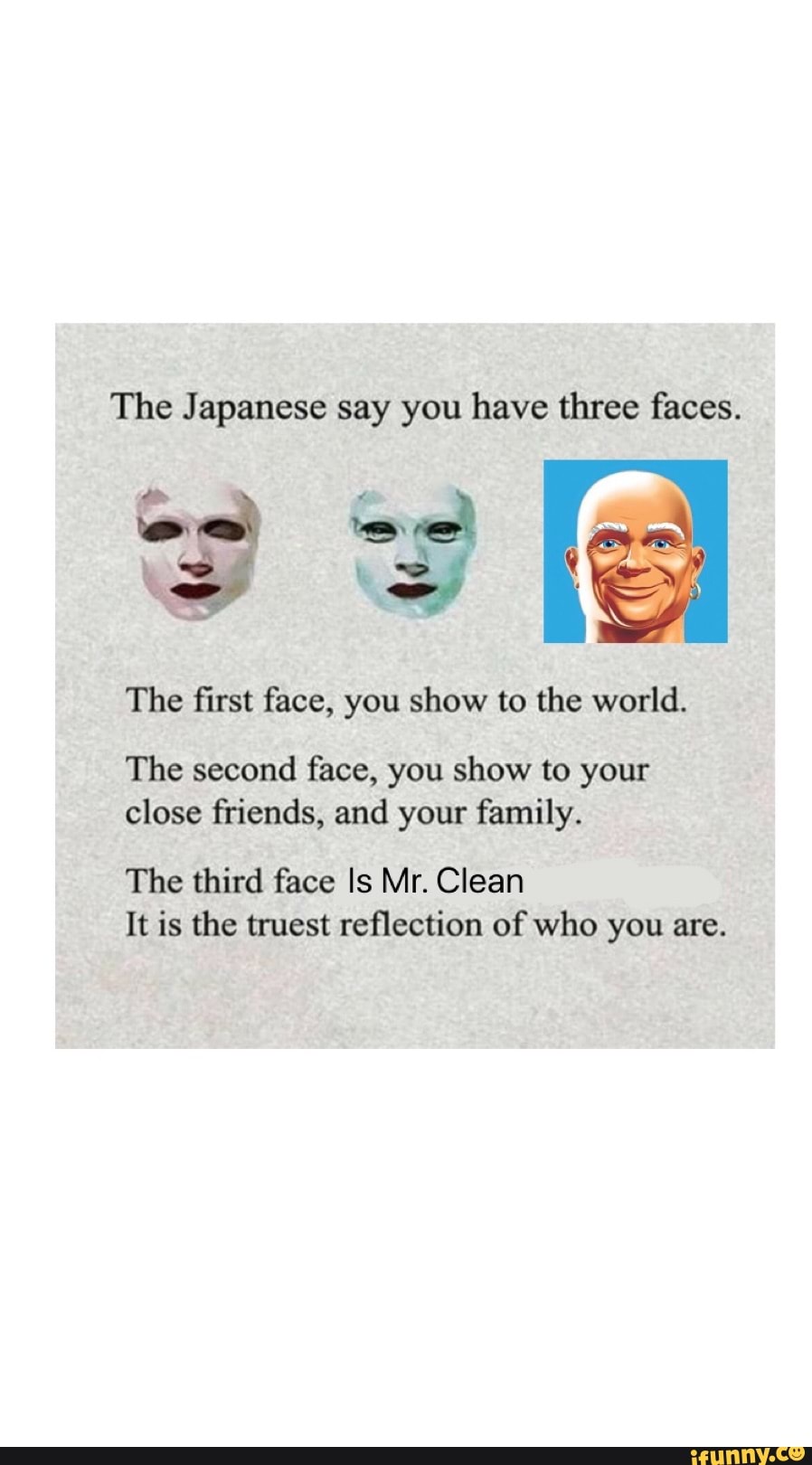
The Japanese say you have three faces. The first face, you show to the world. The second face
Yes the missionary was talking about the Japanese people and their 3 faces. I was just clarifying that it isn't a Japanese saying is a saying about the Japanese people.. We generally have 3 faces, however a lot of people have more faces, some have 2 (and theoretically some only have 1 but that's a very difficult thing to actually accomplish.

Three faces, A Japanese proverb. I want a cute face, a sad face, and the face of a demon. for my
👉 HIRE ME FOR COACHING & MENTORINGhttps://go.bestbookbits.com/mentoring👉 GET A COPY OF MY NEW BOOK HEREhttps://www.xlibris.com/en/bookstore/bookdetails/806.